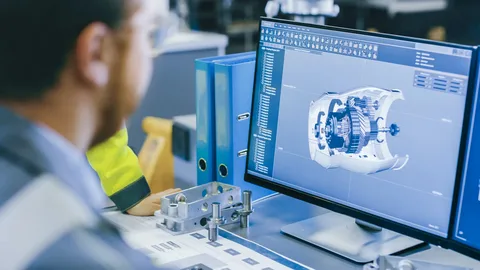The landscape of the animation industry has been evolving since its inception. With advancements in technology and the advent of innovative platforms, animation has transformed from mere cartoons for kids into being a crucial part of industries like gaming, film, advertising, and even health care. One such groundbreaking innovation is the integration of Augmented Reality (AR) in animation. Animation paired with AR has the potential to drastically change the way we perceive our virtual and physical worlds. Let’s explore how.
Augmented Reality: A New Light on Animation
Augmented Reality injects life into animation by allowing us to experience the digital elements in a real-world setting. AR is the bridging technology that makes it easy to overlay the virtual objects onto the real world. This integration opens up a whole new range of possibilities for the animation industry.
Transforming User Experience
A vital mission of animation is to create a captivating user experience. AR, combined with animation, helps to intensify the emotional connection between the user and the virtual world. One such instance that is making waves is Pokemon Go, which uses AR to turn the whole planet into a Pokemon landscape.
Advancements in Storytelling
AR is changing the way stories are narrated and experienced. Traditional animation offered viewers a chance to watch and experience a story. But with AR, viewers have the opportunity to be part of the story. The film industry has already started using AR-embedded movie posters and trailers that give users an active participation in the stories.
Integrating AR and Animation: The Technological Aspect
With technological advancements, the merging of AR with animation has become seamless. Innovation and creative ideas from Animation Services can lead to results that push the boundaries of the user experience to a whole new level.
Virtual Reality vs. Augmented Reality
While Virtual Reality (VR) creates an entirely artificial environment, AR overlays digital content over the real world. In the animation industry, VR has limitations, as it demands a disconnect from the real world. AR, however, bridges this gap, making it a more immersive and real experience for users.
Tools and Software
With growing demand, there has been significant development in AR tools and software. From ARToolKit and Google’s ARCore to Apple’s ARKit, these tools and software make it possible to create AR animations that can be seamlessly deployed on apps and used on various devices.
The Future of AR in Animation
The future of Augmented Reality (AR) in animation is poised to redefine the landscape for animators and developers, transcending traditional boundaries and offering innovative, immersive experiences to audiences. AR serves as more than just a tool; it represents a horizon-expanding technology that integrates digital elements seamlessly into the real world. For animators, this means the ability to create content that interacts with and enhances the viewer’s physical environment, fostering a dynamic and personalized experience. From interactive storytelling to immersive gaming, AR opens avenues for creativity that go beyond conventional screen-based animations.
As this technology advances, the potential for blending the virtual and real worlds becomes increasingly limitless, promising a future where animated content is not just viewed but experienced in ways that captivate and astonish audiences. The convergence of AR and animation holds the promise of a new era in storytelling, where the boundaries between fiction and reality blur, providing unique and unforgettable experiences for audiences across various mediums.
New Avenues
The integration of AR in animation is opening new avenues in advertising, education, and even real estate. From AR billboards displaying animated ads to AR educational apps making learning fun for kids, the applications are endless.
Impact on Whiteboard Animations
As a specific example, AR is all set to redefine the way we perceive whiteboard animations. By using AR in Whiteboard animation services, a typical 2D whiteboard video can be transformed into a 3D experience that viewers can interact with, adding a new dimension to the way information is communicated.
Conclusion
Undeniably, Augmented Reality is a revolution in the animation industry. The amalgamation of AR and animation is not only transforming the landscape of the industry, but it is also enriching the user experience and developing unprecedented possibilities. As technology continues to advance, the influence of AR animation will rise, creating a dynamic shift in how we experience the world around us. As consumers and participants in this evolving industry, we can anticipate witnessing more exciting advances in AR and animation in the forthcoming years.

